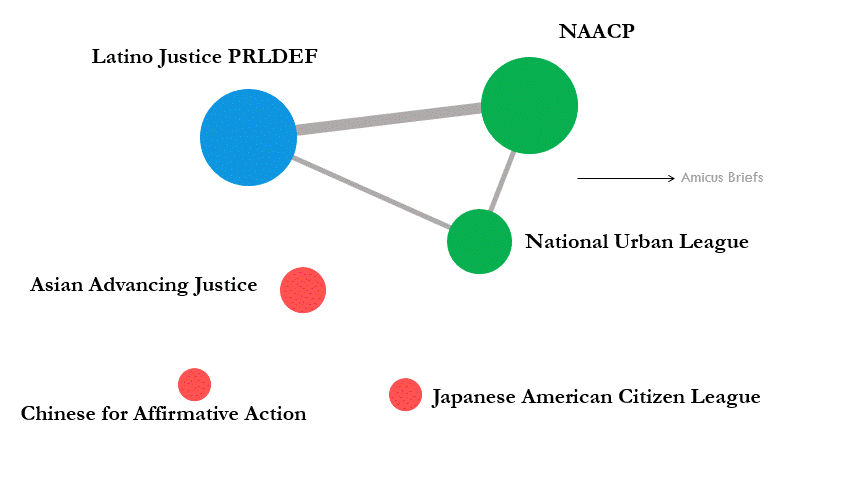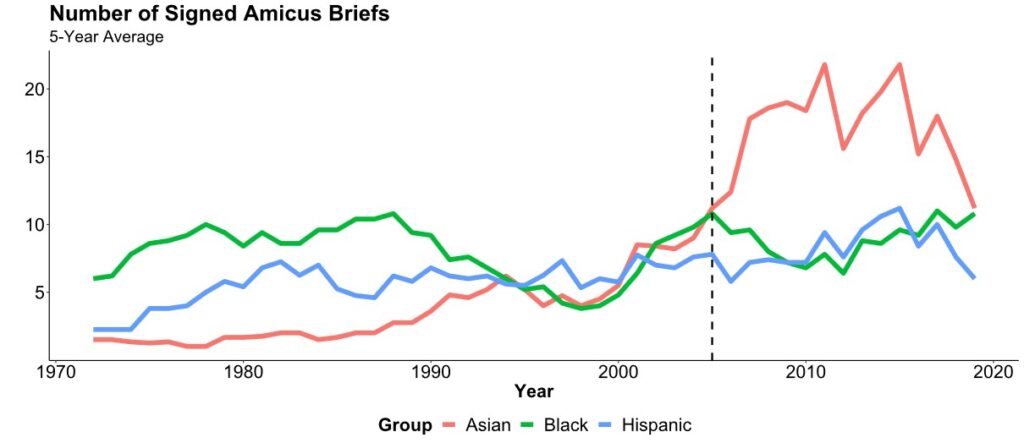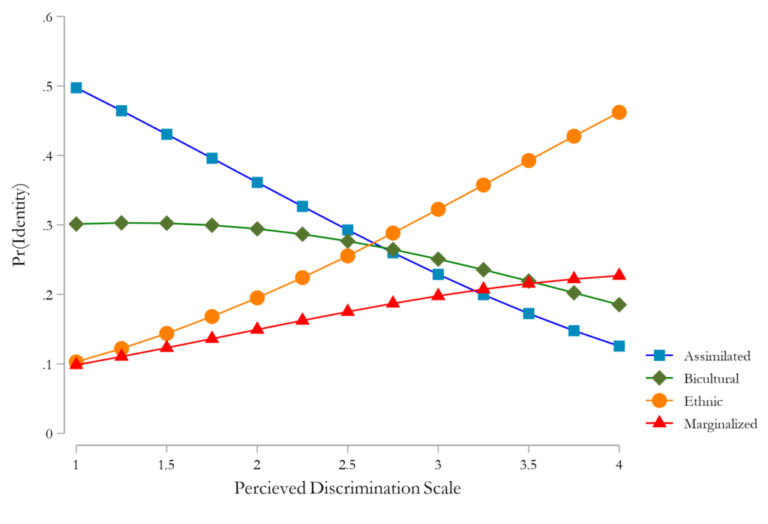Muna Adem
Assistant Professor, Sociology
Research
Overarching Research Agenda
My current and ongoing research examines how immigration-driven diversity influence race and ethnic relations, group divisions, and social cohesion in the US and Europe. In my US-based research, I am particularly interested in examining how emerging groups (e.g., Latinos and Asian Americans) challenge classic theoretical predictions about racial inequalities stemming from the Black-White divide.
Trust, Cooperation and Conflict in Diverse Societies

One line of research examines the conditions that shape ethnoracial (mis)trust and cooperation in contemporary societies. Public and scholarly debates have emerged about the societal impact of immigration-driven diversity. At the core of many of these debates are notions of trust and cooperation, both of which are fundamental for social cohesion. Motivated by these insights, I ask: first, how and why does the salience of ethnoracial identities influence interracial trust and cooperation in an increasingly diverse society? And second, what role do organizations and elite actors play in promoting or constraining cooperation between ethnoracial groups?
I use behavioral games to identify mechanisms while having more precise measures of how people make decisions (rather than saying what they will do) concerning interracial trust and cooperation. While the study of micro-macro linkages in race and ethnic studies remains essential, this project also advances the literature by examining the role of advocacy organizations in promoting or constraining cooperation between ethnoracial groups. To do so, I collected longitudinal administrative data on Black, Latino, and Asian American organizations’ attempts to influence the Supreme Court of the United States through the filing of Amicus Curiae Briefs. In many cases, Amicus Briefs are co-written or co-signed by multiple organizations (see also Figure 1). This unique dataset allows me to examine the conditions under which cooperation grows, especially when the stakes are consequential for race relations writ large. I examine the changing nature of cooperation from 1971 to 2021 through an analysis of the longitudinal networks of organizations (see also Figure 2). I will further complement these results with automated text analyses of the Amicus Briefs themselves to investigate how racial discourse and diversity boundary-making have changed since Post-Civil Rights Era in more detail.


Citizenship, Nationalism and Ethnoracial Identities

Immigration remains one of the most central political and social issues in the public sphere. Given ongoing cultural and social backlash, including a revival of ethnic nationalism, my second line of research explores how immigration-driven diversity continues to reshape boundaries related to citizenship ideologies, national and ethnoracial identities.
First, I study citizenship boundary formation processes. In collaboration with Dr. Denise Ambriz, we designed an original conjoint experiment to assess how US-born citizens – both White and ethno-racial minorities – evaluate attitudes toward legal (a pathway to citizenship) and cultural (identifying as American) membership claims by immigrant groups.
Broadly, we find that legal status and age of arrival are powerful determinants of views toward legal membership. Race and ethnicity, on the other hand, has a greater impact for who is considered a fellow American. Moreover, we show that evaluations of citizenship claims differ for Whites, Blacks and Latinos in meaningful ways. By juxtaposing evaluations of legal membership with those of cultural membership, our study challenges the emerging perspective that norm-based explanations alone explain contemporary attitudes toward immigrants. We further argue that by focusing only on legal membership views (e.g., admission processes), scholars fail to capture other forms of socio-political exclusion that continue to generate inequality among immigrant groups and ethnoracial minorities.
This study, titled “What Makes a Citizen? The Boundaries of Citizenry and Contemporary Immigration,” received numerous grants and won the 2020 Graduate Student Paper Award from the North Central Sociological Association and the 2022 Schuessler Award for Graduate Research from the Sociology Department at Indiana University. It was recently published in Social Forces (2023).
A second project (with Dr. Tamara van der Does) examines national and ethnic identity development among children of immigrants. Self-identification is an important indicator of both cultural and socio-economic adaptation processes, and we leveraged longitudinal data to examine the intersection of gender and nationality origins for identity development. Using the Children of Immigrants dataset, we find that the number of men and women from Latin America and the Caribbean who identify as American decreases over time. The results also show that women have a stronger sense of their ethnicity by adolescence, while men are more likely to change identities until emerging adulthood. We advance the literature by highlight the importance of an intersectional analysis to better understand the structural conditions that shapes identity development for ethnic minorities and immigrants. This paper was published in Emerging Adulthood (2019).
Perceived Discrimination, Marginalization and Mobilization

A third research stream examines how perceived discrimination and marginalization processes shape race relations, stratification and mobilization among immigrants and ethnoracial minorities. In exploring how majority and minority groups experience and interpret discrimination, prior studies have primarily focused on experiences of Blacks vis-à-vis Whites. However, immigration-driven diversification introduces questions about the experiences of non-white/non-black groups, who often fit imperfectly within the Black-White binary. Motivated by these insights, two projects use a newly collected dataset by Dr. Dina Okamoto et al., ‘Immigrant-Native Relations in 21st-century America’ to explore the contextual aspect of perceived discrimination.
In one article, my co-authors and I examine patterns of perceived discrimination among South Asian Indian immigrants. Conceptually, a combination of unique status characteristics produces contradictory hypotheses about how much discrimination Indian immigrants are likely to report, given that they are one of the most educated immigrant groups with high levels of English fluency, yet are also seen as non-white and “forever foreign.” Our quantitative data highlight a puzzle: respondents report a range of explicit and subtle discriminatory experiences, mainly from Whites, yet frequently downplay and minimize them. Relying on qualitative interviews, we identify at least three reasons that explains this puzzle: (1) Indians’ relative evaluation with systems of stratification in India; (2) their strong commitment to meritocracy; and (3) their relative evaluation with the experiences of other U.S. minority groups. We develop a “relational framework” which allows scholars to examine how perceived discrimination is often interpreted both contextually and relationally. We further argue that this type of relative evaluation reflects and further reinforces existing systems of racial stratification where anti-Black distancing plays an essential role in how South Asian Indians try to fit in within the larger American Black-White divide. This paper was published in Social Psychology Quarterly (2023).
In a second interrelated paper, my co-authors and I further explore the contextual aspect of perceived discrimination by examining how skin-color shapes racialization processes among Mexican newcomers. Drawing on key insights from literature on colorism, we find that darker skin tone is significantly associated with higher reports of racial and linguistic discrimination, higher reports of discrimination from U.S.-born Whites (but not Blacks), and a greater tendency to struggle internally among Mexican immigrants. Together, these results support the colorism literature’s key argument that skin tone is distinct from race and offer new insights into how skin tone shapes experiences with perceived discrimination. This article was published in Social Psychology Quarterly (2022).
The third study examines how and under what conditions ethnic and racial minorities are included in social movement coalitions. Using data from 6,335 anti-Iraq War street protesters, my co-authors and I finds that the incorporation of political minorities is a complex multi-stage process: social contacts between a movement and minorities are not enough to ensure that minorities adopt the movement’s dominant framings or that minority organizations are equally central. We present a theory of racialized activism focusing on inadequate recruiting and a lack of retention. This article was published in Socius (2023).
Ethnoracial Diversity and Immigrant Incorporation in Europe

I am interested in the ways that social processes related to race, ethnicity, and immigration diverge depending on national context and policies. To gain a better understanding of these macro-level forces, the last line of research moves beyond the US context and employs a comparative framework. European contexts provide a unique opportunity to examine the role of different national contexts, and this is essential because in many cases, boundary-formation occurs at the national level.
In a Forthcoming book chapter focusing on ‘Stigma Processes in the Context of Migration-Generated Diversity’, Dr. Dina Okamoto and I compare and theorize about immigration and de-stigmatization processes in Europe and the US. We find that de-stigmatization is often historically- and context-specific and thus might not work in the same way for all immigrant groups. Furthermore, we find that Muslims in Europe and undocumented immigrants in the US continue to face significant challenges, as they experience unique form of discrimination and exclusion. We conclude that more work needs to be done to understand how different social domains link to one another and the processes through which inequalities are challenged or reinforced.
Similar to my work in the US, I am interested in examining the role of perceived discrimination, marginalization and network ties on integration processes in Europe. I have three ongoing studies that use the ‘Children of Immigrants Longitudinal Survey in Four European Countries (CILS4EU)’ dataset. For instance, in one study, my coauthor (Dr. Tamara van der Does) and I examine the role of peer friendship network for immigrant incorporation and mental health outcome. We conclude that coethnic and racial friendship ties is associated with better mental health outcomes for ethnoracial minorities while those with higher native peers report worse mental health, highlighting the dark side of contact theory. In another project, my coauthors (Drs. Patricia McManus and Tamara van der Does) and I are investigating the relationship between perceived discrimination, ethnoracial identities and political mobilization among ethnic minority adolescents in Sweden, Netherlands, England, and Germany. Draft available upon request for both papers.
Moving beyond integration processes, I am also interested in understanding how perceived threat mechanisms and measurement of immigration shapes various outcomes related to welfare and social policy preferences. For instance, I am currently part of a larger research team that aims to better investigate the linkage between immigration and social policy preferences across countries in Europe. Together with my collaborators, Dr. Patricia McManus and Helge Marahrens, we extend existing models by refining our understanding and measurements of foreign-born populations. We find that our new measurement speaks more precisely to the perceived threat of migration from Muslim countries and its effects on social policy support. One paper from this mass collaboration project is recently (2022) published in Proceedings of the National Academy of Science and a second paper is currently under review.
